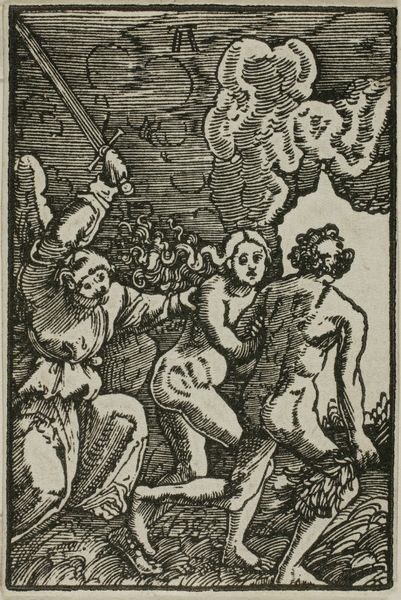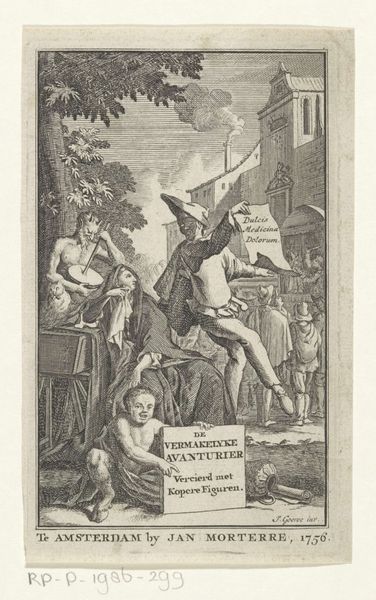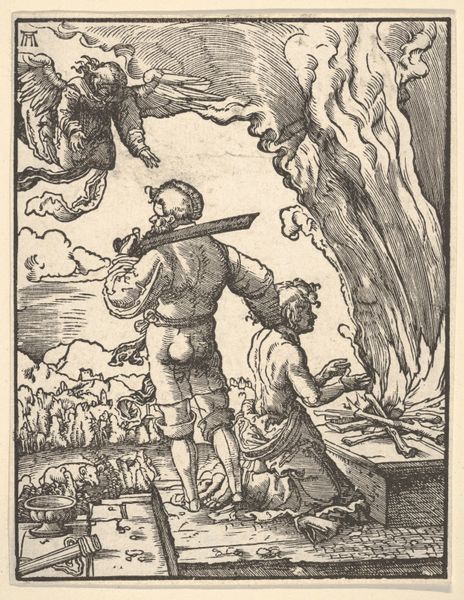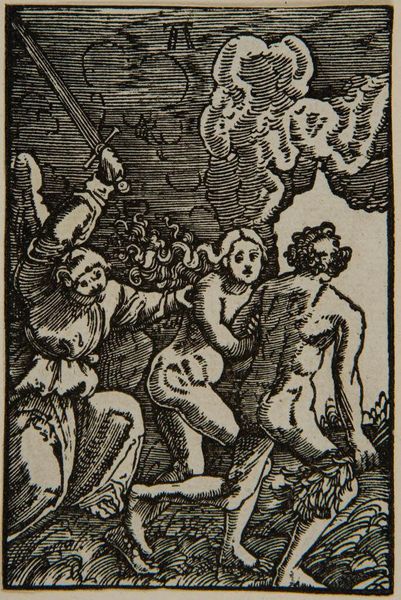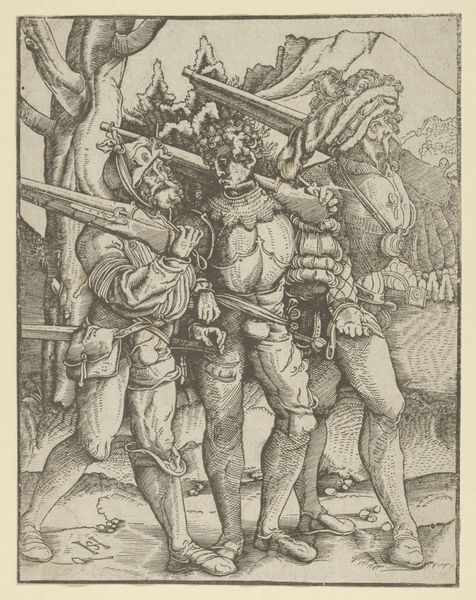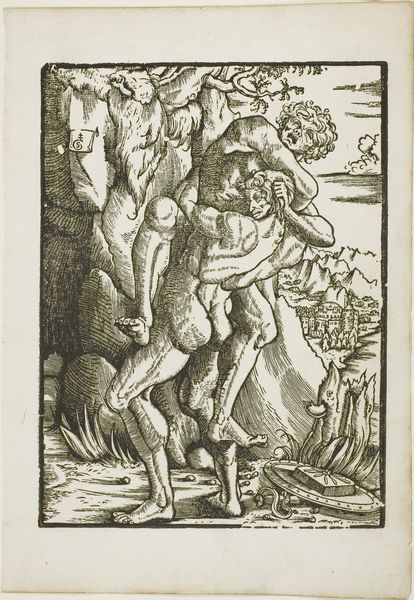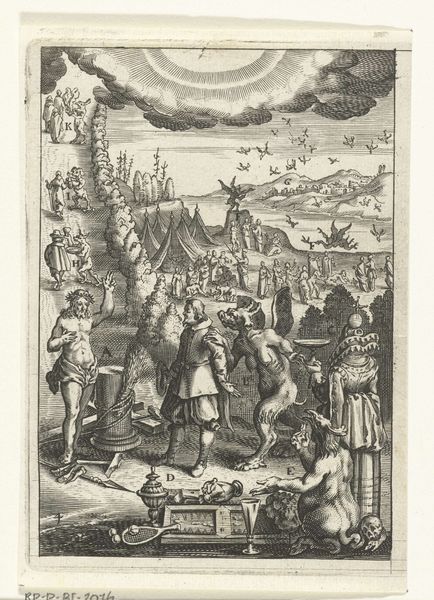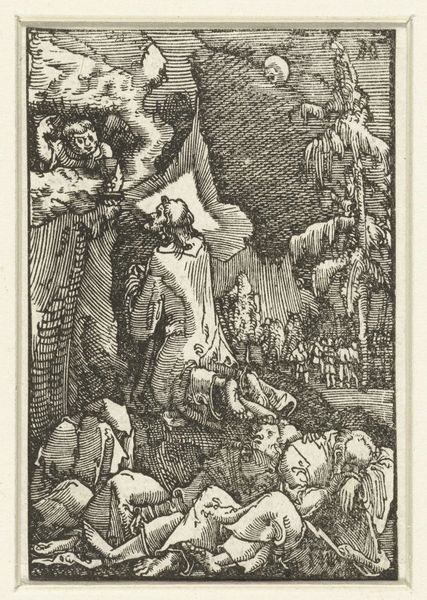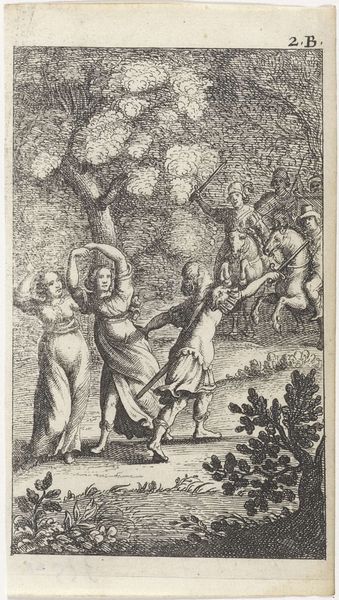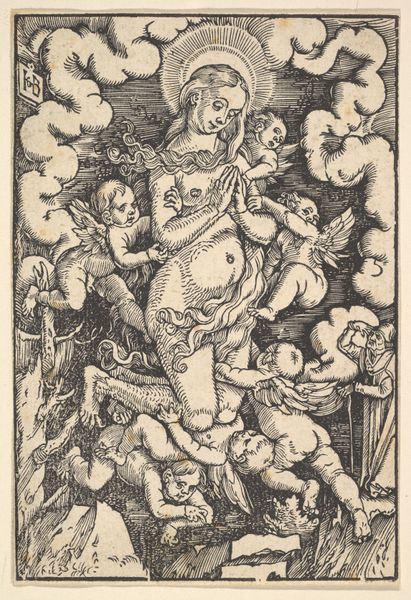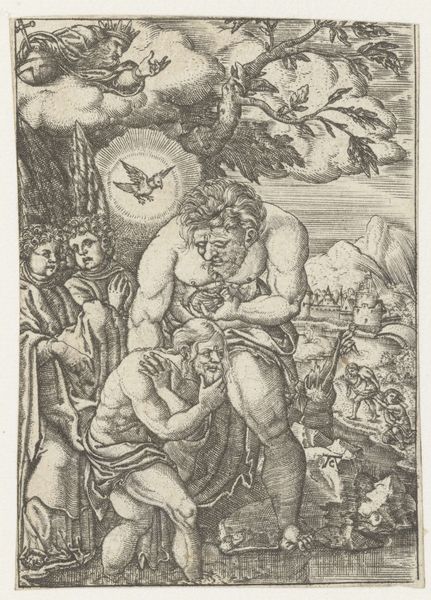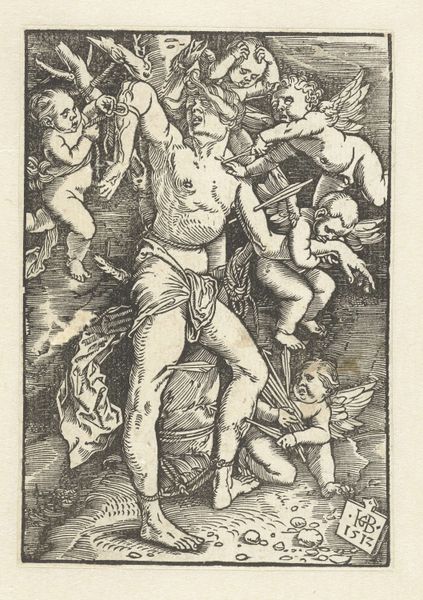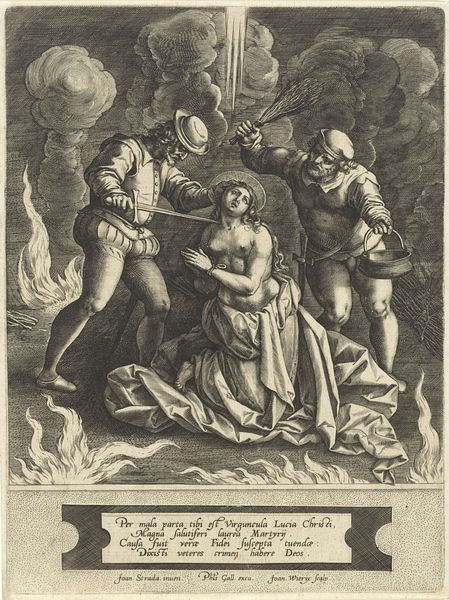
drawing, print, woodcut, engraving
#
drawing
#
narrative-art
#
pen drawing
# print
#
pen illustration
#
old engraving style
#
figuration
#
woodcut
#
line
#
history-painting
#
northern-renaissance
#
engraving
Dimensions: height 72 mm, width 48 mm
Copyright: Rijks Museum: Open Domain
Editor: Here we have Albrecht Altdorfer's "Expulsion from Paradise," dating from around 1506 to 1538. It's a striking woodcut. The scene feels frantic and claustrophobic, emphasized by the harsh lines. What jumps out at you when you look at this piece? Curator: What strikes me immediately is the labor involved in its production. Consider the artist, meticulously carving into wood, translating a theological narrative into a reproducible image. These aren’t passive illustrations; they are commodities circulated in a burgeoning print market. Editor: That’s interesting, so it's about more than just the religious story it’s showing? Curator: Precisely. Think about the consumption of images during the Northern Renaissance. The masses, largely illiterate, were increasingly exposed to biblical narratives not through text, but through affordable prints like this one. Altdorfer, here, is less a divinely inspired artist, and more a craftsman meeting a growing demand. How does the medium – a woodcut – affect the reading of this piece? Editor: Well, the strong, defined lines create a very dramatic and immediate effect. It almost feels raw. Does the roughness connect to the subject matter in a symbolic way, like representing the harsh realities Adam and Eve are about to face? Curator: That’s a valid interpretation. But consider the constraints of the medium itself. The woodcut dictates a certain aesthetic – bold lines, limited detail. It’s a relatively inexpensive method of mass production. Are we seeing a deliberate artistic choice, or a result of material conditions and intended audience? These choices emphasize its existence as a good sold and traded in the period, complicating any attempt at divine intent. Editor: So, it's both an artistic expression and a commercial product, deeply connected to the means of its production. I hadn’t considered that before! Curator: Exactly. By understanding the material processes, we can begin to challenge notions of artistic genius and explore the socio-economic context that birthed this image.
Comments
No comments
Be the first to comment and join the conversation on the ultimate creative platform.
